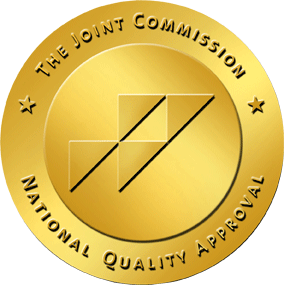By: Kenya Evans
TW: Mention of trauma and trauma symptoms
Our bodies are capable of wondrous things. They keep us breathing, interacting, and connecting with the world. They also regulate autonomic responses—the things we do without thinking—so that we can go about our days without worrying about the hustle and bustle of blood flow, heart rate, and muscle reaction.
Those autonomic responses are also involved in how we react to stress, danger, and threats-sometimes even after an event has passed.
It should be no surprise that there is also a strong connection between our feelings and physical responses. Current research indicates that our physical memories are imbued with emotion. For example, you might remember a loving embrace from a partner, a pat on the back from a parent, or a firm handshake from a mentor. When you reflect on that memory, even decades later, you might experience a physical reaction in the present, such as feeling pleasantly flushed, light flutters, or a warm tingling feeling.
On the other hand, when we think about painful or distressing past events, our bodies can express deep shame, regret, and loss through bodily aches and pains, illness, or rapid heartbeat (Van Der Kolk, 1994). According to Van De Kolk, this is how “trauma lives within the body.” Those physical reactions to past trauma can become part and parcel of our daily reality and transform our health in ways that can reverberate for weeks, months, and even years.
How Does Trauma Physically Manifest?
Researchers suspect trauma is based on our evolutionary past, with trauma responses acting as a way to remember dangerous experiences and ready the human body for another worst-case scenario. The responses that once primed us to move quickly to safety or fight danger when needed now pose their own threat by eroding our emotional and psychological well-being and leading to physical effects.
One of trauma’s most common physical effects is hyperarousal. Symptoms can include a racing heart, irritability, aggression, difficulty concentrating, an increased startled reaction, or “jumpiness.”
Hyperarousal can lead to other symptoms such as stomach pain, an achy neck and back, stiffened shoulders, and a general sense of unease. Over time, these symptoms can have a deleterious effect on the body and negatively impact health. On the other hand, trauma may cause hypoarousal. Hypoarousal is typically defined as a paralysis in the face of a threat or danger.
In other words, it is our “freeze,” response. People dealing with trauma may shut down and feel a disconnect between their mind and body. Other symptoms of hypoarousal can include brain fog, an inability to concentrate, exhaustion, and fatigue.
Traumatic stress may even rewire our brains. Studies show that trauma may alter how memory functions; it can make profound changes in the brain pathways and structures, including the hippocampus, which regulate emotion and learning. This in turn can alter how people remember things long-term including how memories are accessed. It can also affect how people relate objects and events. Other changes can include deficits in cognition and higher levels of stress hormones. This may cause obsessive and intrusive thoughts, and even changes to the vision and hearing.
Trauma and PTSD
Post Traumatic Stress Disorder (PTSD) is another term that is often used incorrectly to describe trauma. Not all trauma survivors have post-traumatic stress disorder; they are not one and the same. However, PTSD also “lives in the body” in a variety of ways.
People with PTSD experience more intense manifestations of trauma that interrupt their daily lives, including flashbacks, night terrors, and obsessive thoughts. They can also experience triggers– times where smells, sounds, colors, or other sensory stimuli can cause them to relive the traumatic event.
People living with PTSD often report increased symptoms of aggression and hypervigilance, sleep disturbances, anxiety, depression, and loss of appetite. Physical symptoms such as headaches, nausea, and joint pain are also common. For people living with PTSD, work, school, and close relationships often suffer.
How Skyway Can Help with Physical Manifestations of Trauma
At Skyway, we offer a variety of ways to help our clients cope with trauma and its impact on the body. One method includes yoga therapy. Our highly trained yoga therapist understands trauma and how it relates to the body. Our yoga therapist, Jenna Csont, fuses body based therapies for trauma and yoga for trauma to address the physical symptoms of trauma. She also combines her knowledge of trauma with training in chronic pain, allowing for a holistic approach to wellness.
Skyway uses many other in-treatment options, including Dialectical Behavioral Therapy Prolonged Exposure (DBT PE), Cognitive Processing Therapy (CPT), Somatic Experiencing, Sensorimotor Psychotherapy, and Polyvagal Theory. Each of these modalities increases our clients’ agency and opportunities for choice. We also offer group and talk therapies along with Exposure and Response Prevention (ERP), and Prolonged Exposure (PE). Many of these therapies address trauma and how it negatively impacts emotion, learning and coping.
If you or someone you know deals with the effects of trauma, or experiences other symptoms that keep them from living the life they want, Skyway is here.



